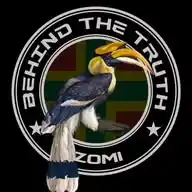
𝔹𝔼ℍ𝕀ℕ𝔻 𝕋ℍ𝔼 𝕋ℝ𝕌𝕋ℍ (𝔹𝕋𝕋)
February 7, 2025 at 07:52 AM
*Day 19: The Struggle for Recognition – A Fight to Reclaim Identity*
For the Zomi, the struggle for recognition has been a relentless pursuit that has spanned generations, borders, and political systems. It has never been just about land or governance; it has always been about the right to exist as one people, to reclaim an identity that colonialism, national policies, and geopolitical realities have repeatedly fractured.
When the British colonized Zogam, they imposed foreign names like Chin and Kuki, erasing the indigenous term Zomi. As we have already discussed in our previous posts, when India and Burma (Myanmar) gained independence, the Zomi were split between two modern nation-states, forced to identify as either Burmese or Indian, neither of which fully acknowledged their cultural and political autonomy. For decades, the Zomi have fought back—not with a single movement but through a series of political organizations, resistance efforts, and diplomatic negotiations to secure their rightful place in history.
*Zomi Nationalism and the Push for Autonomy*
While various political and armed movements have sought to unite the Zo people, our focus remains on the Zomi Movement, which has defined the struggle for self-determination and collective identity. In 1972, the Zomi National Congress (ZNC) was formed in Manipur, India under the leadership of T. Gougin. The organization aimed to unify all Zomi people across India, Myanmar, and Bangladesh under a single administrative unit called Zogam—a vision of territorial reunification that would restore the Zomi homeland as it was before colonial borders were imposed.
The ZNC's early efforts focused on demanding a Union Territory within India. In 1983, the ZNC submitted a memorandum to the Prime Minister of India, requesting the recognition of Zogam as an autonomous region. However, due to internal divisions and opposition from other tribal political groups, the movement faced resistance both from within and outside the Zomi community. By the 1990s, the ZNC's political influence declined, but it laid the groundwork for later movements advocating Zomi identity.
*The Rise of Armed Struggle*
As peaceful negotiations failed, some ambitious Zomi leaders turned to armed resistance. In 1993, the Zomi Revolutionary Organization (ZRO) was formed in Kachin State, Myanmar, with a military wing called the Zomi Revolutionary Army (ZRA). The ZRO had three primary objectives:
Ethnic reunification of all Zomi people.
Territorial reunification of Zomi lands across India, Myanmar, and Bangladesh.
Political self-determination within a single administrative unit
Unlike the various arm movements before, which sought outright independence, the ZRO focused on autonomy within existing states. The movement was fueled by frustration—Zomi communities were increasingly marginalized in Myanmar, subjected to Burmanization policies, and left out of political representation in India.
The armed resistance led to conflict with the Burmese military, which saw Zomi nationalism as a threat to state unity. In India, ZRA activities led to clashes with Kuki militant groups, as competing ethnic political aspirations escalated into violence in the late 1990s.
*Modern Political Negotiations and Challenges*
Despite decades of struggle, the Zomi political movement remains fragmented. The Zomi Council, formed in 1998, became India's primary body advocating for Zomi autonomy. It submitted a memorandum to the Indian Home Minister in 2001, calling for the creation of a Zomi political entity. However, the movement continues to face opposition from other tribal groups, particularly the Kuki National Organization (KNO), which seeks its political recognition under the name Kuki.
*A Struggle Without Borders*
The Zomi’s fight for recognition is unique in that it transcends national borders. Unlike most political struggles, which are confined to one country, the Zomi are fighting for self-determination across India, Myanmar, and Bangladesh. Their history of forced division means that any movement for recognition must navigate multiple governments, conflicting national policies, and deep-seated ethnic divisions.
The Zomi struggle for recognition is not over, but it is evolving. While armed movements like the ZRA continue to exist, there is growing momentum for peaceful political advocacy. The rise of digital activism, international human rights advocacy, and diaspora-led initiatives has brought renewed attention to the Zomi cause.
*Reflection:*
How does a movement for self-determination survive when it is split between multiple states, divided by colonial legacies, and suppressed by political powers? What lessons can be learned from the Zomi’s century-long struggle for recognition?
*Quote to Highlight:*
"_For the Zomi, recognition is not just a political demand—it is a fight to exist as one people, against the lines that history has drawn to erase them_."
BTT
🔴🟡🟢
https://whatsapp.com/channel/0029VaYCqe71yT229xZ6f42y
❤️
👍
😂
😢
🙏
38